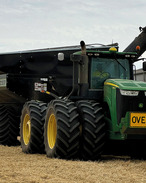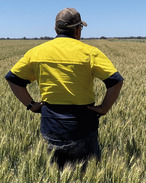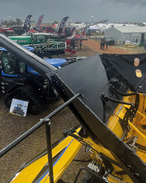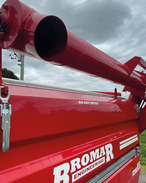This article is 7 years old. Images might not display.
In the farming world, we usually hear about deciles in reference to rainfall. The other place we see deciles used is in market price analysis. Understanding what deciles or percentiles really mean is an important factor of getting full value out of the analysis.
WHAT ARE DECILES
There are two ways to explain deciles. One is that the set of historic data is ordered from smallest to largest, then divided into 10 groups with the same number of data records in each group. This forms the 10 deciles meaning group one has the lowest 10 per cent of records and group two has the second lowest 10% of records and so on. In this explanation, each group of records represents a decile or percentile, which is used to compare the current conditions to.
The other way to explain deciles is to think of them as the time the records have been below a point in the data set. For example, decile one or the 10th percentile indicates that for 10% of the time, records have been below this point. Using this explanation if current conditions were said to be in decile eight or the 80th percentile, it would mean that records have historically been below this level 80% of the time and only above this level 20% of the time.
MISUNDERSTANDING
A common misunderstanding is that decile five is average therefore decile 2.5 is half of average and decile 7.5 is one and a half times average. While this is simple it’s not accurate and can be a very misleading way to interpret information.
RAINFALL DECILES
Upon review of 2016, the Australian Bureau of Meteorology map of rainfall shows that the vast majority of the country had decile 8-10 rainfall. What this means for those in the decile eight rainfall areas is when compared to history, rainfall has been below that of 2016, 80% of the time. Or in other words, rainfall has only been above that of 2016, 20% of the time.
PRICE DECILES
Using deciles to compare current market prices not only reveals the obvious but puts current prices in perspective with recent history. According to Mecardo market analysis for March, the domestic feed barley spot price was in the 11th percentile or just over decile one, meaning since 2009, the price has only been below this level 11% of the time. Canola on the other hand was at the 62nd percentile or just over decile 6. APW in Victoria was at the 15th percentile of prices since 2010 or decile 1.5. Livestock market analysis as another example was at the 94th percentile or decile 9.4 for the EYCI in March and the ESTLI was at the 97th percentile or almost decile 10 since 2004.
DECILES FOR BUDGET SENSITIVITY
Using deciles is not only a handy way to compare current rainfall or commodity prices to history, it can also be used as sensitivity analysis in budgeting. Knowing what land can produce in a range of decile rainfall years can direct what yields to enter into a ‘poor year’ or ‘good year’ budget scenario. If the average yield is 3t/ha and we want to see what the budget looks like if we only get 2t/ha, it would also be helpful to know what rainfall decile this would occur in, according to history, to help put the ‘poor year’ budget into perspective with the likelihood of it occurring. Likewise with budgeted pricing – it is helpful to know where the prices we’ve used sit relative to recent history to determine if we are budgeting for conservative or high prices and by how far.
Contact:
Chris Warrick, Primary Business
0427 247 476






















